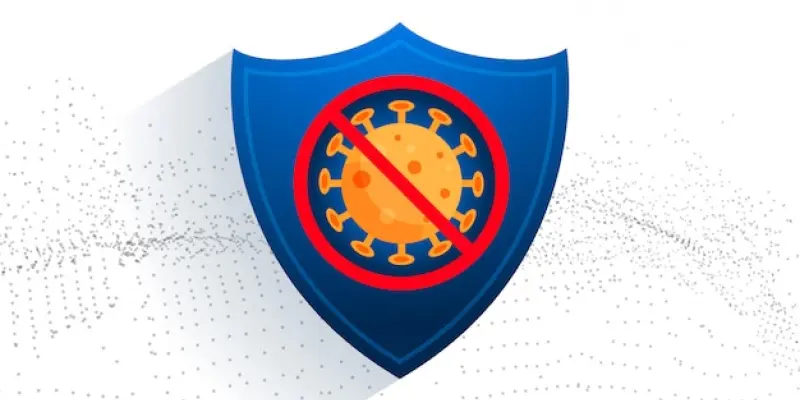In a significant development within the cybersecurity landscape, a vulnerability identified as CVE-2025-21756 has emerged within the Linux kernel’s Virtual Socket (vsock) implementation. This flaw represents a notable security risk, enabling local attackers to potentially escalate their privileges to the root level under certain conditions. The critical nature of this vulnerability is underscored by its CVSS v3.1 Base Score of 7.8, indicating its prominence within security discussions and urging immediate attention from administrators. The issue arises from improper socket binding handling during transport reassignment within the vsock subsystem. More specifically, the flaw occurs due to incorrect decrementing of the socket’s reference counter, leading to a troubling use-after-free condition. The impact encompasses a range of Linux kernel versions, particularly affecting releases before 6.6.79, 6.12.16, 6.13.4, and 6.14-rc1, necessitating swift updates to avoid exploitation.
Exploitation Details and Security Implications
The exploitation method revolving around CVE-2025-21756 is primarily centered on inducing the use-after-free bug and maneuvering to reclaim the freed memory with controlled data input. This strategy, essential for bypassing Linux Security Module protections like AppArmor, underscores the sophisticated methods attackers might deploy to compromise environments. One notable technique involves leveraging pipe backing pages and constructing a Return-Oriented Programming (ROP) chain. This strategy is critical for elevating privileges while using vsock_diag_dump() as a side channel to outsmart Kernel Address Space Layout Randomization (KASLR). Such exploitation strategies make it evident that the flaw not only poses a severe threat due to its potential impact but also due to the complex nature of how attackers might execute their methods. It is particularly alarming for cloud infrastructure and virtualized systems heavily dependent on the vsock functionality to manage guest-host communications seamlessly. Given these developments, there is a pressing consensus within the cyber community on the urgent steps needed to mitigate risks associated with this flaw. Administrators must act quickly to patch affected Linux distributions using major patches now available to counter the vulnerability. While systems await updates, experts recommend limiting local user access and consistently monitoring for suspicious activities related to the vsock subsystem. It’s critical to recognize that although this vulnerability requires local access, the established reliability of known exploit methods makes it especially threatening in multi-user or containerized environments. Effective mitigation not only involves direct patches but also proactive monitoring and limiting access where feasible, enhancing the overall defense against potential security breaches.
Urgency for Patching and Community Response
The security community’s response to CVE-2025-21756 underscores a significant push toward adapting secure practices and robust patching strategies to counteract this vulnerability. Notably, major Linux distributions have responded by delivering timely patches, prompting administrators to execute updates promptly to safeguard their systems. As new threats continue to emerge, safeguarding systems against such vulnerabilities is crucial, particularly in environments heavily utilizing Linux kernels for their operations. The implications of unpatched systems could be widespread, especially affecting cloud environments and virtualized setups where vsock functionalities serve a quintessential role in operations. Moreover, while direct patches remain the first line of defense, administrators must remain vigilant and conscientious in their approaches. Limiting user privileges and maintaining optimal security hygiene could prove invaluable in further mitigating any potential risks associated with the flaw. Interestingly, even as this vulnerability demands immediate remediation, it offers an insightful reflection on the need for proactive community engagement in formulating effective responses to systemic vulnerabilities. In a digital landscape characterized by dynamic threats, a consolidated approach encompassing timely patching, awareness, and community collaboration stands as the most effective strategy in reinforcing cybersecurity infrastructure.
Navigating Future Considerations
The exploitation approach related to CVE-2025-21756 revolves around triggering the use-after-free bug and reallocating freed memory with controlled data input. This method is crucial for circumventing Linux Security Module protections like AppArmor, highlighting the advanced tactics attackers might use to compromise systems. A significant technique involves utilizing pipe backing pages and creating a Return-Oriented Programming (ROP) chain, essential for elevating privileges, with vsock_diag_dump() serving as a side channel to bypass Kernel Address Space Layout Randomization (KASLR). The complexity of these strategies demonstrates the grave threat posed by this flaw, especially to cloud infrastructure and virtual systems that rely on vsock for smooth guest-host communication. As such, there’s an urgent consensus in the cybersecurity sphere on the need for immediate risk mitigation. Administrators must swiftly patch impacted Linux distributions with available updates. While waiting for updates, it’s advised to restrict local user access and monitor vsock-related activities. This vulnerability’s reliance on local access makes it highly threatening in multi-user or containerized environments. Effective mitigation requires direct patches, active monitoring, and access limitation to bolster defense against potential breaches.

